Coulter had 10 goals and 14 points through just 27 games of the 1931-32 season, which attracted the attention of the Chicago Black Hawks of the NHL, who signed him in time for him to play 13 games during the remainder of the season as well as a pair of playoff games.
Known for his strength and physical play, he remained with Chicago for the 1932-33 season, who paired him with veteran defensive partner Taffy Abel. Coulter played in 46 of the Black Hawks 48 games, which included scoring his first NHL goal on his way to 3 goals and 5 points.
For the 1933-34 season, Coulter established a career best with 5 goals. The Black Hawks finished second in the American Division and defeated the Montreal Canadiens in a two-game, total goals series 4-3. They then eliminated the Montreal Maroons 6 goals to 2 in their two game series to advance to the Stanley Cup Finals against the Detroit Red Wings in a best of five series. Chicago won Game 1 2-1 in overtime and 4-1 in Game 2, both in Detroit. The Red Wings took Game 3 by a score of 5-2 and Chicago then captured the Stanley Cup for the first time in franchise history by a score of 1-0 after 30 minutes of overtime. Coulter contributed a goal during Chicago's eight playoff games.
Coulter played another full season with Chicago in 1934-35, pushing his best season point total to 12, and then played the first 25 games of the 1935-36 season before being traded to the New York Rangers for future Hall of Famer Earl Siebert after he exchanged words with the Black Hawks team owner, who had come into the locker room to berate the players. Coulter played the final 23 games of the 1935-36 season and 47 of the Rangers 48 games. The Rangers defeated the Toronto Maple Leafs and then the Canadiens to make it to the Stanley Cup Final.
Impressed with his defensive skills and competitiveness, the Rangers named Coulter their team captain prior to the 1937-38 season, during which he raised his career high to 15 points as well as equalling his career high of 5 goals. Coulter was only the second captain in Rangers history following Bill Cook, who had been the Rangers captain from their inception in 1926 until he retired in 1937 after 11 seasons wearing the C.
Prior to the start of the start of the next season, Coulter had the honor of being chosen to participate in the Babe Siebert Memorial Game to benefit the family of the late Siebert, who drowned during the offseason.
It all came right for Coulter and the Rangers in 1939-40, as they finished second during the regular season and then defeated the Boston Bruins 4 games to 2 before defeating the Maple Leafs 4 games to 2 in a hard fought series as three of the Rangers four wins came in overtime.
With the Rangers not winning another Stanley Cup until 1994 and Chicago going from 1938 to 1961 between cups, not many players can say they won the Stanley Cup with both the Rangers and Black Hawks. Only Earl Seibert (New York 1933 and Chicago 1938), Paul Thompson and Abel (New York 1928 and Chicago 1934) and Coulter (Chicago 1934 and New York 1940) can make that claim in the history of the NHL.
The following season of 1940-41 would see Coulter set a career high with 19 points from 5 goals and 14 assists, the third time he would score a career best 5 in a season. He would play one additional season for the Rangers, during which he set a career high with 16 assists in 47 games.
With the outbreak of World War II, Coulter, who had been wanting to obtain American citizenship, did just then when the war broke out. He became a naturalized American citizen, enlisted in the United States Coast Guard and joined their hockey team, the United States Coast Guard Cutters, who were stocked with NHLers and competed in the Eastern Amateur Hockey League in 1942-43 and 1943-44, winning the National Senior Open Championship both seasons.
The Cutters style of play and dominance over their opposition suited Coulter's game well, as he scored 13 goals and 33 points in 1942-43 and followed that up with 10 goals and 23 points in 1943-44. He also added a total of 10 goals and 19 points in two seasons of playoff games with the Cutters. The team was discontinued after criticism about their playing hockey while other servicemen were being sent overseas and into battle.
The discontinuation of the Cutters hockey program brought to an end Coulter's career, as he would not return to the NHL and instead chose to retire as a player.
His final career totals were 461 NHL games, scoring 30 goals and 112 points in 11 seasons, during which he won two Stanley Cups, one each for the Black Hawks and the Rangers.
Coulter was elected to the Hockey Hall of Fame in 1974. "He was a real smart player. He hardly ever made a bad play or a mistake. And he had leadership abilities that made him a good captain. The rest of the guys respected him and looked up to him," said his former defensive partner on the Rangers Muzz Patrick on the occasion of his induction.
Today's featured jersey is a 1939-40 New York Rangers Art Coulter jersey. The Rangers added the white outline to the Rangers on the front in 1928-29 and the sweaters remained the same through the 1940-41 season until the club changed to the serifed font still in use today.

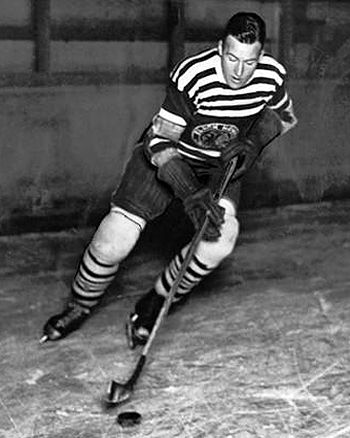
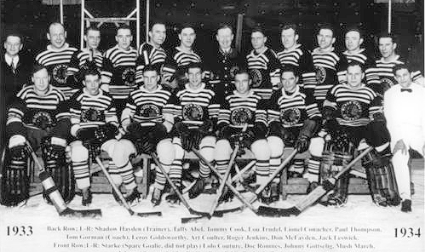
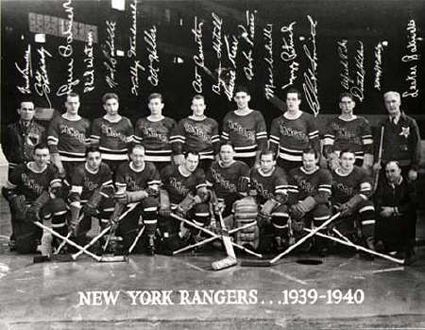
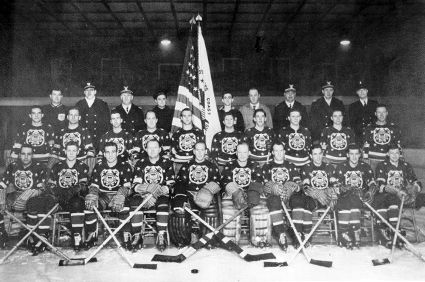

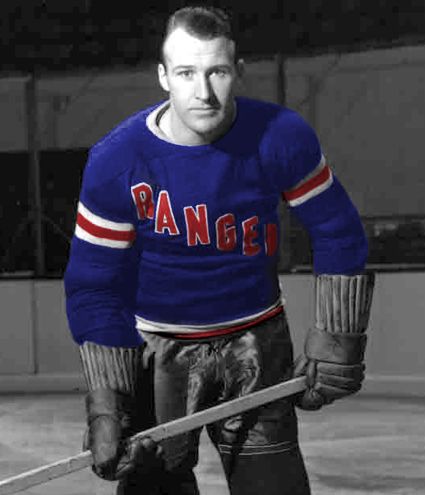
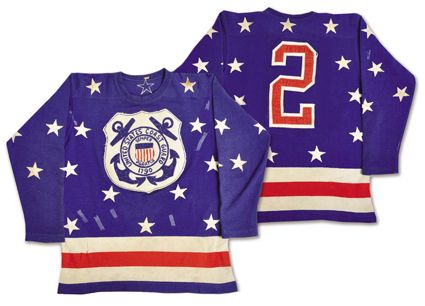
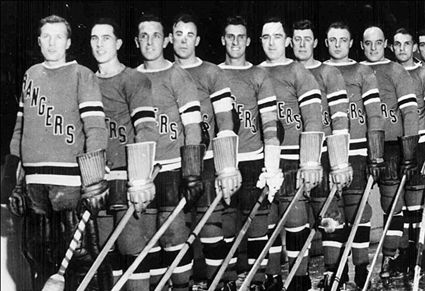











No comments:
Post a Comment
We welcome and encourage genuine comments and corrections from our readers. Please no spam. It will not be approved and never seen.